This week on Pedals with the Pros, we catch up with Eventide artist tamiX, aka Nan Tang 汤楠. You’ve probably seen her at countless tradeshows if you are in this industry. She’s famous as the founder of Midifan, and now for her fantastic live performance with her Buchla system.

Can you please introduce yourself first?
Hello everyone, I’m tamiX from Beijing, China. I’m the founder of Midifan, the most popular website covering computer music and audio industry news in China, and an endorsed artist by Buchla and Eventide. Why these two brands, you may ask? Well, because I only use these two brands in my live performances. I don’t consider myself a traditional musician in the sense that I’ve never really produced music seriously in a studio, nor do I want to. I see myself as an improvisational live performer, and my creative scenes are on the stage.
For every performance, I always have a photographer capture it from various angles. Edited performance videos are uploaded to my YouTube channel. You can think of them as singles that I release. I hardly ever upload them to traditional music platforms like Bandcamp or Spotify because those are platforms for traditional musicians. As an improvisational live performer, my platform of choice is YouTube because the live viewing experience is an integral part of my complete performance, and the music is just one component of it. Please feel free to subscribe to my YouTube channel. My website also signifies that I am a live performer who exclusively does live shows. Besides electronic music, I also engage in live improvisational visual art performances – completely computer-free as well.

Eventide’s news is always released on Midifan, a long-standing collaborative media outlet. What prompted you to start Midifan in the first place?
My mom pushed me to learn the violin when I was a kid, even though it wasn’t my favorite instrument. However, this exposure to music led me to engage with it almost every day. Later, when I discovered electronic music, I felt that creating music with a computer was incredibly fascinating. At that time, there was a severe lack of computer music resources in the Chinese internet space. I initially just wanted to create a personal website to collect various related information. Unexpectedly, I continued with it, and Midifan has now become the most popular and widely recognized portal in mainland China.
Apart from myself, we have four editors who update a vast amount of industry news and technical articles daily. We also publish an electronic magazine every month. We attend and report on tradeshows all around the world. Our footprints can be found at events like NAMM, Frankfurt Musikmesse, AES Convention, Superbooth, KnobCon, and others. In addition to conducting interviews and reporting on events, such as the Music China and the Guangzhou Pro Light + Sound exhibition, we also collaborate with the organizers. We set up a dedicated area alongside emerging products and promising manufacturers, somewhat similar to having a separate space like Superbooth used to have at the NAMM SHOW.
When did you first encounter Buchla, and why did you choose Buchla?
I had a fascination with electronic music from a young age. When I was in high school, I was amazed to discover that you could create music using a computer. However, I always felt out of my element with the traditional process of computer music production. There were too many features, plugins, sounds, and choices, which left me feeling overwhelmed. It wasn’t until 2021 when a friend invited me to a nightclub. On that night, the performer on stage wasn’t a traditional DJ but a musician from New Zealand named Kaishandao, who used Elektron drum machines, various synthesizers, and a guitar. The energy of her live performance completely captivated me, and I began researching how to do live performances in nightclubs without using a computer.
I initially got into Eurorack modules. I visited the home of Meng Qi 孟奇, one of China’s most famous electronic musicians and electronic musical instrument inventors, founder and owner of Mengqi Music. I handpicked modules from his rack, and he even sold me the Eurorack case he had built himself. This way, I assembled my very first Eurorack modular system. It’s safe to say that Meng Qi was my life mentor who guided me into the world of modular synthesis. Over time, I gradually accumulated many Eurorack modules.
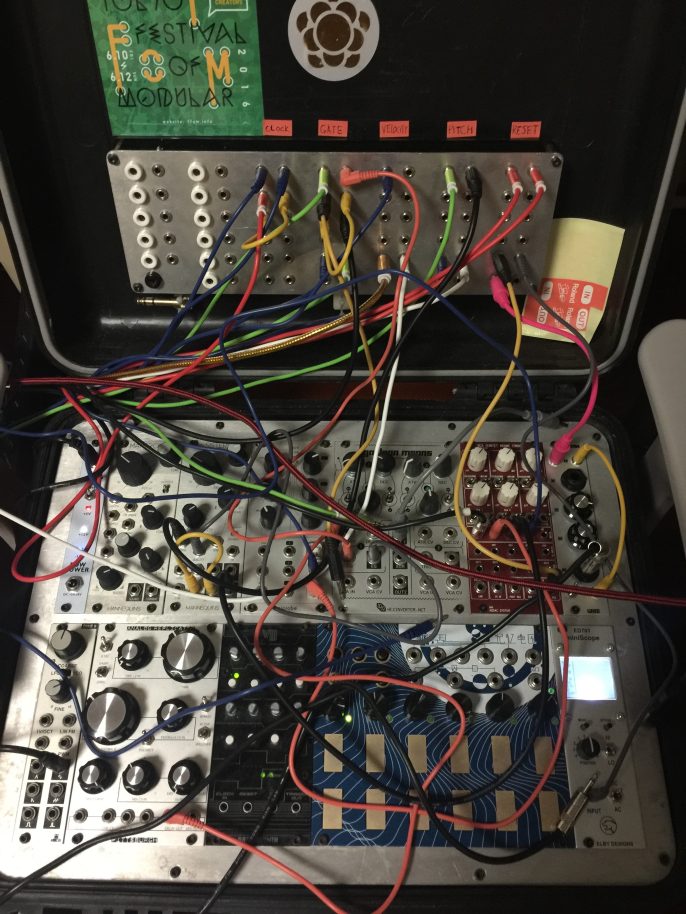
I did a few performances with Eurorack, but I never quite found the right feeling, and many module designs were complex. I had to watch tutorial videos on YouTube every time before using them, or I would forget how to use them. It was at this moment that another famous producer in China, Jun Yan 严俊, appeared. He always told me that Eurorack wasn’t the way to go and Buchla was the best modular system. When I went to his studio and tried out his wall of Buchla modules, I was deeply amazed – this is exactly what I am looking for!
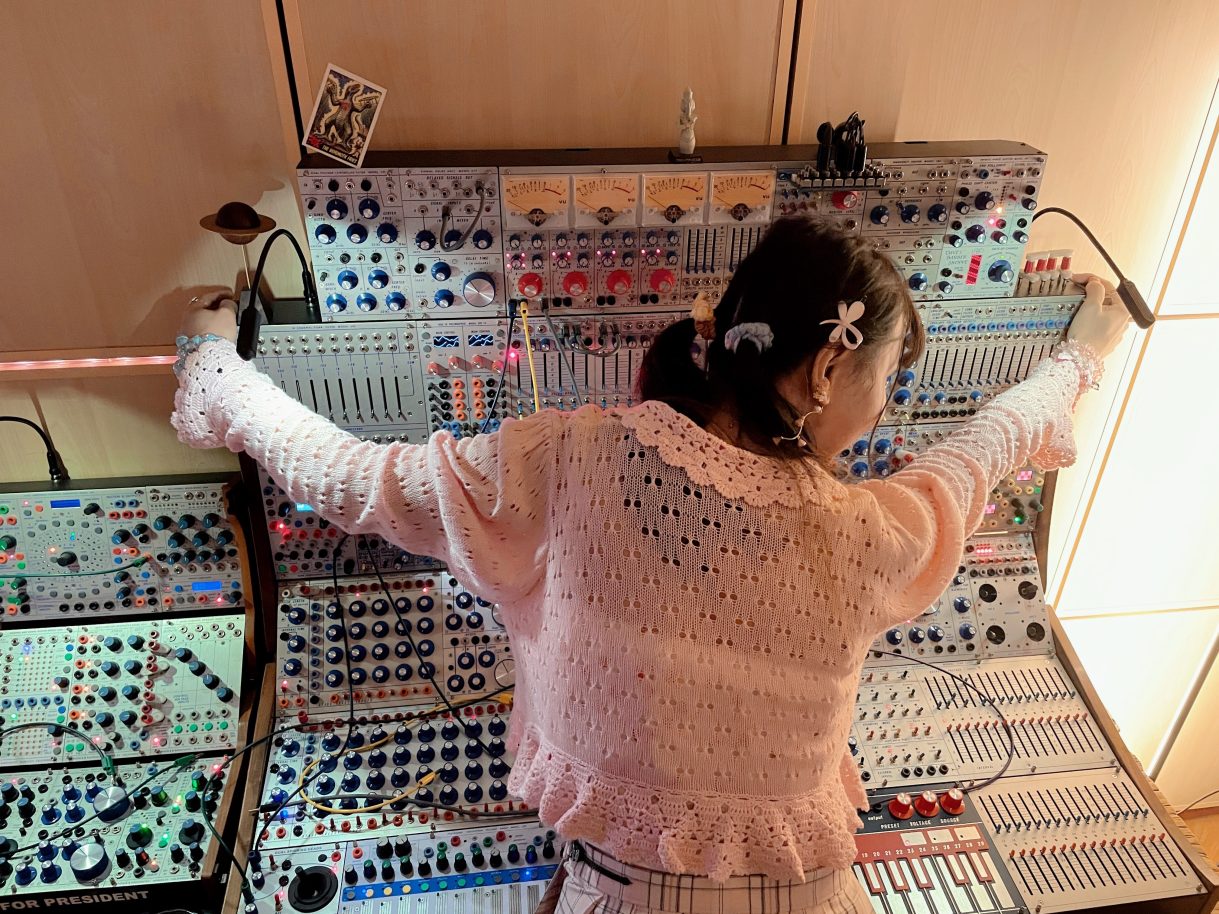
So, I gradually started selling my Eurorack modules (only keeping the LZX Industries video modules and some CV processing modules that could work with them) and replaced them all with Buchla modules. Initially, when I saw photos of Buchla modules, I thought they would be very complex and challenging to manipulate. However, once I got my hands on them, I realized that their design was incredibly intuitive and straightforward. I hardly ever looked at the manuals or tutorial videos (in fact, there were hardly any), and I could easily create vibrant and unconventional sounds with just a bit of experimentation.
Of course, I often get asked, “Why don’t you use this particular synthesizer? Its sound is amazing!” or “Why don’t you add a certain drum machine to make your rhythms richer?” My answer is quite simple: No, I want to use just Buchla for everything. I want a pure Buchla system with no distractions from anything else, so I can immerse myself in the unified world of Buchla without worrying about how to sync or connect with other devices. The operational logic of other devices is different from Buchla, which can be distracting during live performances. I no longer need to spend time worrying about who has released new gear, which gear is better than another, what people are talking about on forums, or watching various YouTube influencers’ hands-on videos. I just need to focus on my world and push Buchla to its limits. I feel like I don’t need any other instruments in my lifetime. Buchla works excellently for me!
What does your performance system look like?
After multiple updates, my current main system for stereo performances consists of an 18-panel case and a 6-panel boat, totaling 24 Buchla modules. All sound goes into the Eventide H90 for processing and is then output to the Sound Devices Mix 10 II for mixing, recording, and delivering the final stereo signal to the stage. In addition to this, there are two small UTL-1A Format Jumbler Utility Boxes made by Low Gain Electronics for passive attenuation of CV signals. To ensure system stability and clean sound, I also bring a small Furman voltage conditioner. These components are quite heavy and represent the limit of what I can carry myself.
I’m also experimenting with quadraphonic and even Dolby Atmos 7.4.1 immersive sound performances. In addition to the main system mentioned above, for these setups, I incorporate a 227e Quad Mixer and two modified 2H9 modules from Northern Light Modular in a 4-panel boat. I also add a 3-panel boat containing a 266e and 296e module. The quadraphonic sound is mixed and recorded using the Sound Devices Mix 10 II. The final quadraphonic signal is then routed to my computer, where Logic Pro performs real-time upscaling to Dolby Atmos 7.1.4. The audio is subsequently output to the live stage via an RME MADIface XT in MADI coaxial format.
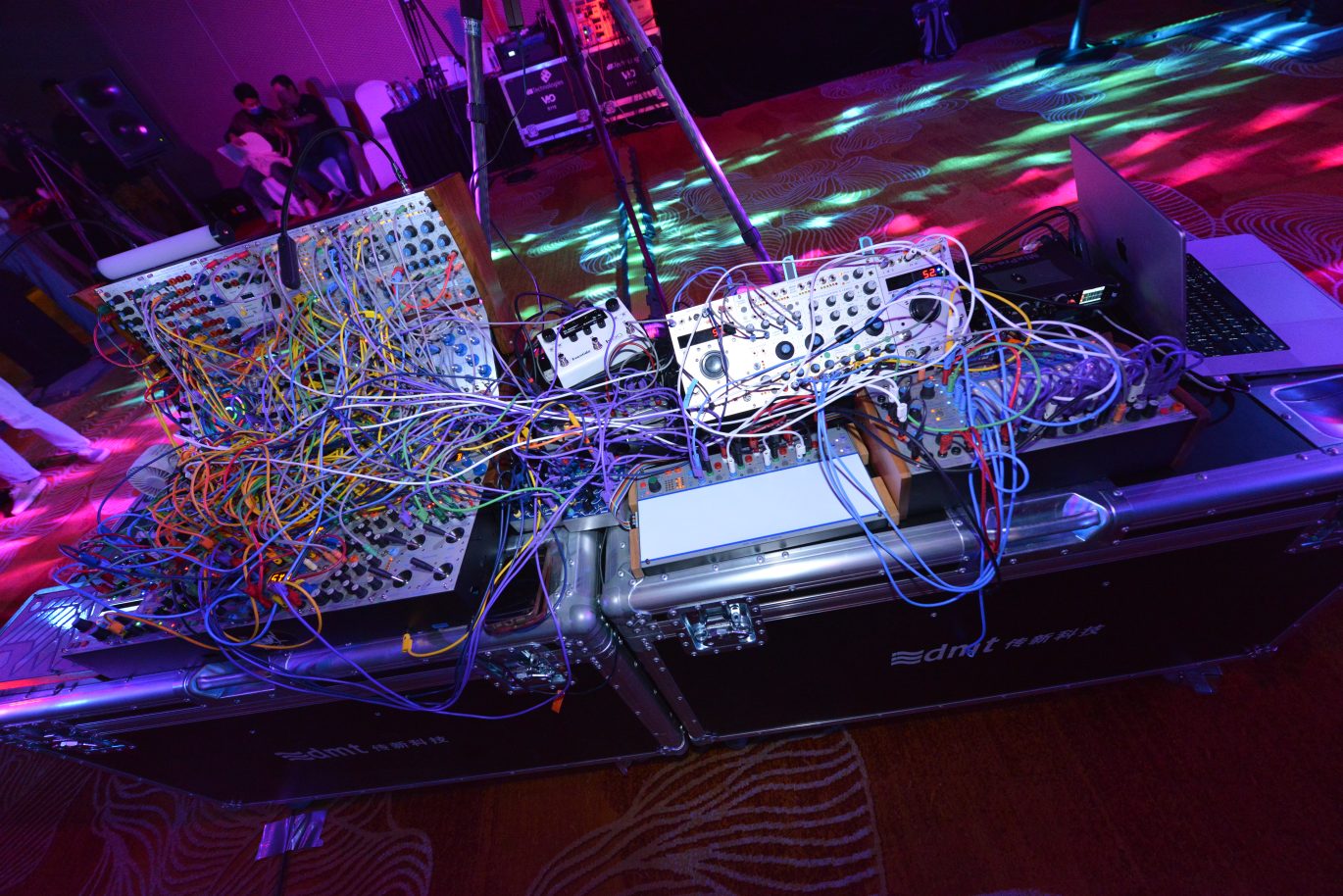
Courtesy of 下次一定对上焦
I’ve already done over 60 live performances with this stereo system, including two multi-city tours in China, and I’m planning to embark on a global tour. It’s quite incredible when I think about it!
What was the first Eventide device you used, and why did you choose Eventide?
Of course, it was the classic H9! I noticed that nearly all Buchla users were using an Eventide H9 for final sound processing, including my favorite artist, Suzanne Ciani. So, I didn’t hesitate to get one! Later on, I realized that one H9 wasn’t enough, so I bought an even cooler H9 Dark edition. To facilitate quadraphonic performances, I purchased two 2H9 modules modified by Northern Light Modular. These modules allow the H9 to fit into the Buchla rack, replace the audio interface with tinijax, and add CV inputs for directly modulating effect parameters.
How do you use the Eventide H9?

Initially, I used two H9 units for my performances. The white H9 Max was set to use the Shimmer Reverb algorithm. All the stereo sounds generated by the Buchla, except for the kick drum, passed through this H9 Max for stereo reverb processing, and then the output was in stereo. The black H9 Dark was set to use the EQ Compressor algorithm. Its role was to process the monophonic kick drum sound generated by the Buchla. In addition to shaping the kick drum’s tone with EQ and compression, it also boosted the output level and delivered it in mono. The stereo sound from the H9 Max and the monophonic sound from the H9 Dark were ultimately mixed and recorded using the Sound Devices Mix-10 II recorder. Simultaneously, they were output to the main speakers on the stage.
Throughout the entire performance, I hardly touched any parameters on the two H9 units. It’s not until just before the performance ends that I increase the mix ratio on the white H9 Max’s reverb to create a lush “tail” of sound after an abrupt stop. It can be said that without these two H9 units, the dry output from the Buchla synthesizer would sound quite “dry” or lacking. You can think of the H9’s Shimmer Reverb as “rendering” a black-and-white image into a vibrant and harmonious blend of colors. And if it weren’t for the H9 Dark processing the kick drum, the live kick drum wouldn’t sound as powerful and impactful.

Now, I’ve replaced the two H9 units with one H90 because I’ve found that the H90 is more portable in terms of both size and weight, and it offers even more powerful features. Reducing the weight of my performance equipment is crucial, especially for multi-city tours.
What are your new experiences with the H90 that have pleasantly surprised you, and what features are you looking forward to?
The large screen and multiple knob controls on the H90 have allowed me to make more adjustments during performances. With the H9, I would at most tweak the Hotknob a bit because adjusting it was cumbersome. While there was an iPhone app, I didn’t want to touch it on stage, as the audience might think I was chatting with friends or browsing Instagram, LOL. The H90 makes it much more convenient to directly adjust multiple parameters on the device, which is incredibly handy!
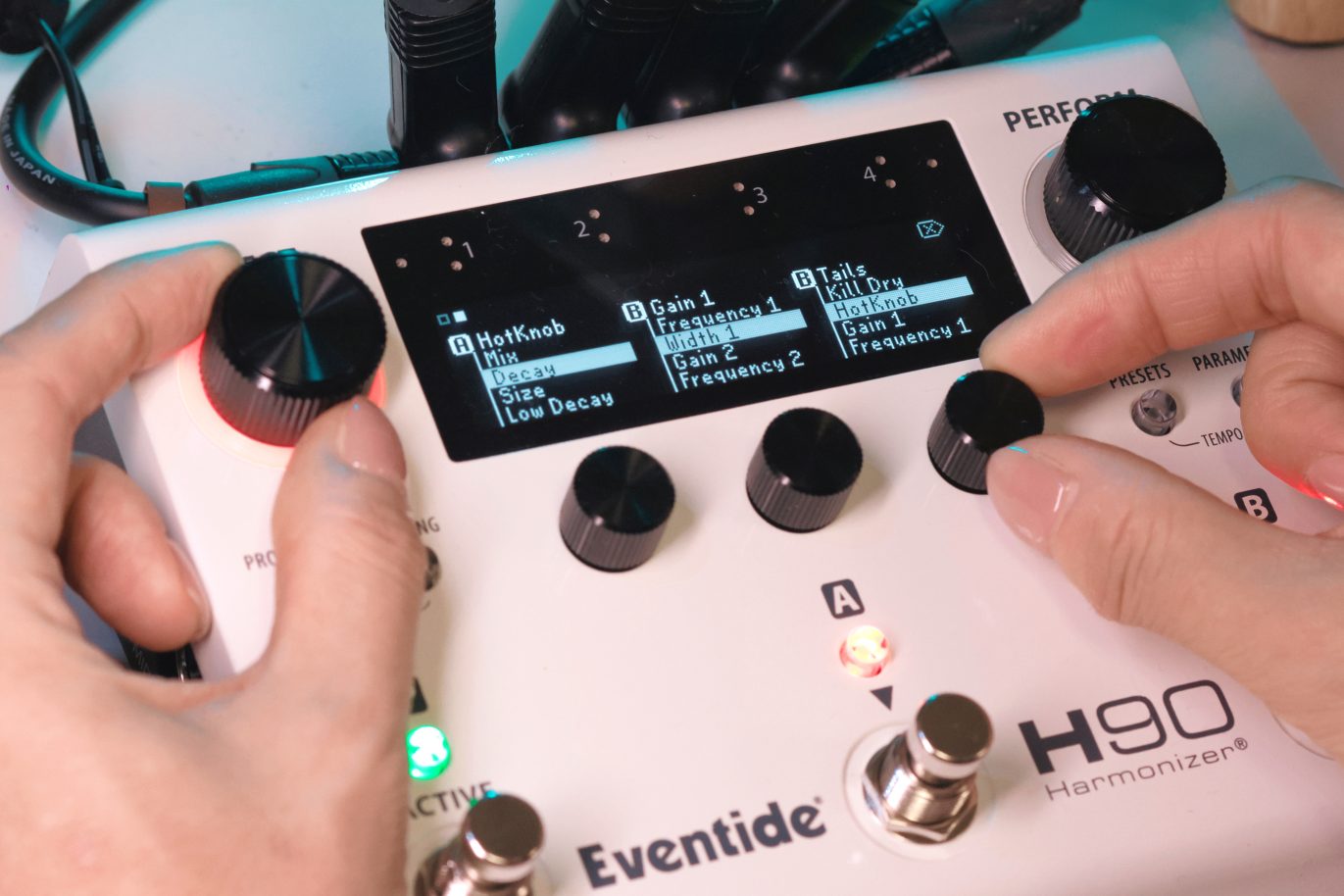
Courtesy of Tabriss
Have you recently used the H9 and H90 for live performances?
I’ve been researching how to use Buchla for Dolby Atmos immersive sound performances. Coincidentally, Eventide’s Chinese distributor, Digital Media Technology, organized a three-day seminar event and set up a 9-meter diameter Dolby Atmos immersive sound system in a hotel using Genelec S360 & 8350 speakers. This allowed me to achieve the world’s first Dolby Atmos immersive sound performance entirely performed using Buchla.
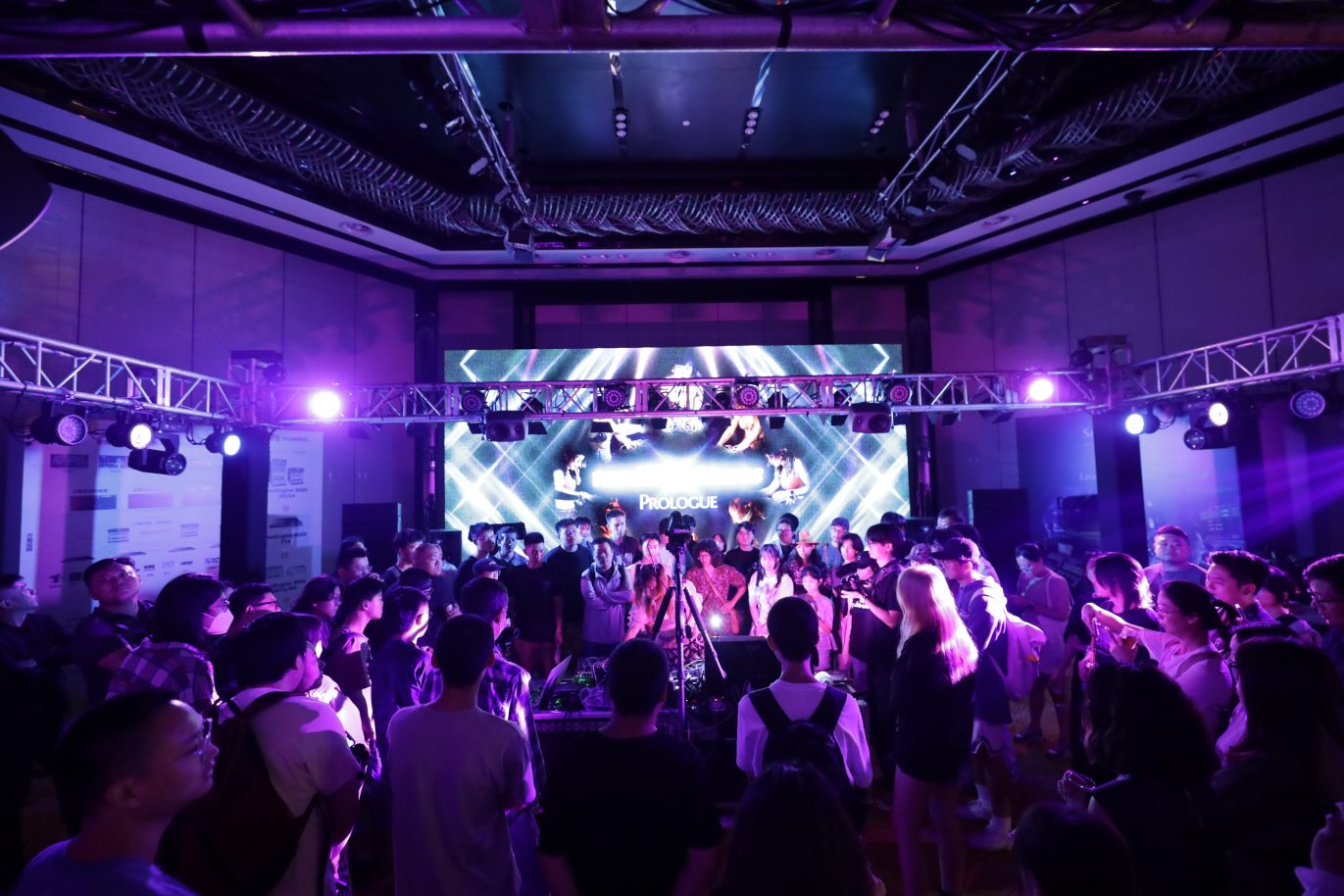
The Buchla 227e Quad Mixer can take inputs from four channels, so I needed to process all four input channels with effects that could synchronize with the music’s rhythm. As mentioned earlier, I have two modified 2H9 units to handle two channels of audio processing. The other two channels are conveniently processed using the H90, which converts the CV signals from Buchla’s banana cables into quarter-inch interfaces through Low Gain Electronics’ UTL-1/2 Format Jumbler Utility Box. These signals are then input into the H90’s Express pedal in 1/2, achieving synchronized effect changes. Furthermore, the H90 allows for a user-friendly selection of effect change ranges!
The music for this immersive sound performance is already available on Apple Music. You can search for “tamiX in Atmos” to listen to it. You can also watch the live video on my YouTube channel.
Do you have any upcoming performance plans for the future?
In September, I launched my world tour for the first time! The first stop was KnobCon Number Eleven in Chicago. Apart from performances, I’ve also hosted a lecture to share how I use Buchla and Eventide. In November, I’ll be touring in Japan for two weeks (November 18 in Osaka and November 22/25 in Tokyo), followed by Superbooth in Berlin next year.
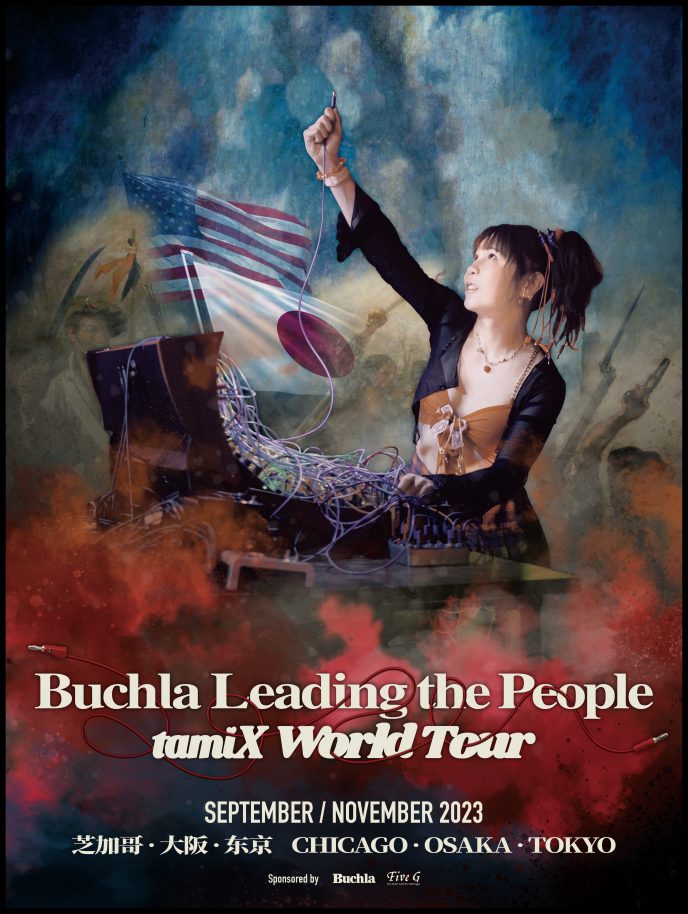
After experiencing my first immersive sound performance, I can’t stand stereo performances anymore, LOL! So, moving forward, I will continue to delve into the details of immersive sound performances. I hope to find more suitable venues and speaker setups to do more immersive sound performances.
Besides music, do you have any other hobbies?
When I’m not performing, I go skateboarding every day. There’s a large indoor skatepark near my home. I work part-time as a skateboarding coach there. I’ve only been skateboarding for 2 years, and my skills are quite basic. Skateboarding is a thousand times harder for someone like me with no natural athletic talent compared to performing with Buchla. Still, I persist in skateboarding daily in the hopes of improving my skills.
All the Eurorack modules I have at home are dedicated to visual art. I thoroughly enjoy using them to create improvised visual art for other outstanding electronic musicians’ performances. It’s like flying aimlessly in the sky, with no destination, free to soar, and seeing different scenery every second. I also delve into various methods of creating a Psychedelic Light Show. For example, last year, I used two small goldfish in conjunction with camera feedback to create a psychedelic visual show for an ambient concert.
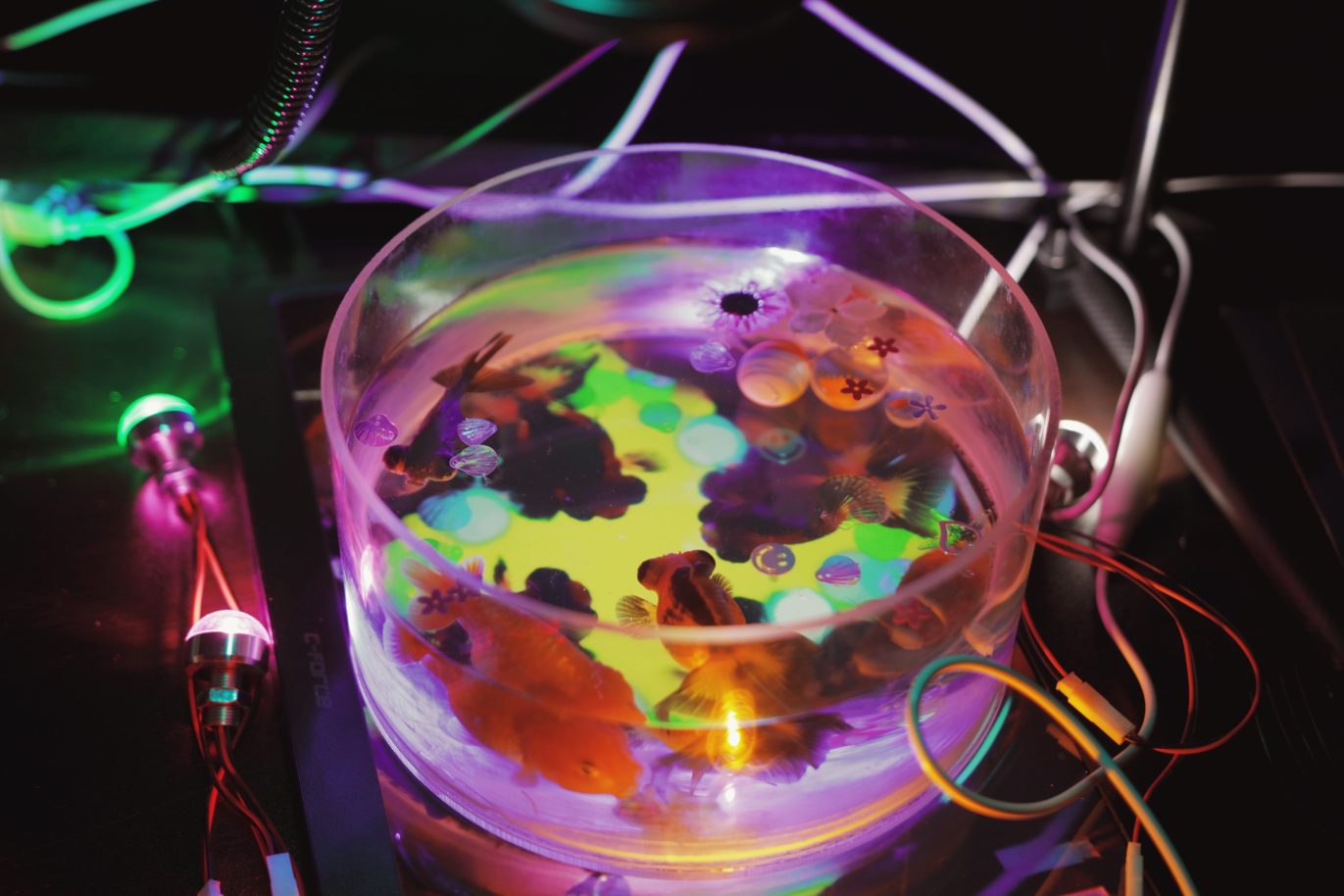
I also enjoy taking photos with my beloved Buchla and writing stories that reflect societal realities. I use photographs to tell these stories and compile them into a photobook. You’re welcome to subscribe to my Patreon to see daily updates of my photography.

Find tamiX on socials!


